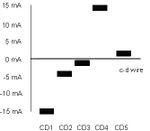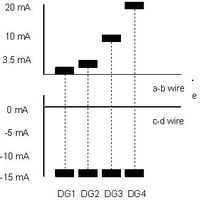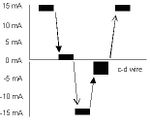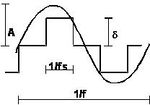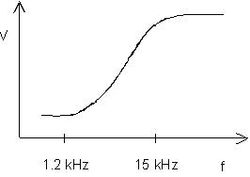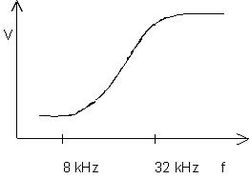Principles of Operation (AlphaCom)
From Zenitel Wiki
(Redirected from Principles of Operation)Stentofon's intercom exchange AlphaCom is based on a new technology compared to previous systems. The two major changes in AlphaCom compared to Touchline is the speech coding used, and the fact that all actions in the exchange is based on messages on a 16 Mbit/s data bus. This makes the exchange fully digital internally. The purpose of this document is to describe the basic principles of the exchange and to give an overall view of the system. The different boards in the exchange are identified and described.
System Overview
Exchange
The AlphaCom intercom exchange is built up by one ore more modules. Each module can have a maximum of 138 subscribers. This number is heavily dependent on the number of other boards than subscriber line boards in the module. When the term exchange or AlphaCom is used, it refers to one or a number of interconnected modules.
Module
The module is based on a backplane carrying digital signals. This backplane interconnects the various parts of the system.
A module is the backplane fitted into a 19" cabinet. There are 26 slots (connections) to the backplane. The signals on the backplane can be divided into three sections.
- Audio channels. There are 16 TDM buses, thus giving a total of 256 timeslots in the system. These 16 buses are referred to as the audio bus.
- Data channels. There are two 16 Mbit/s serial data channel, the display data channel and a set of control and sync signals. These signals are referred to as the data bus.
- Power leads. A set of supply voltages.
The module can be equipped with different boards, each with a number of features and resources.
The boards of the module
Module Controller AMC
The AMC board is the key board in the system. This board is literally controlling the entire module. All connections, switching and routing is controlled by AMC. All the internal data-transfer and communication between the boards in the module is performed on one of the 16 Mbit serial data channels. The processor on AMC is linked to this serial bus by the Master Bus Interface (MBI).
Both the SBI and the MBI will be described separately. The other blocks are:
Tone Filters
All steady tones in the module are generated on AMC. The tones are generated by the MBI and by the DUARTs. Typical steady tones are tones that are available on the Audio Bus like Busy tone and Dial tone.
In addition to these tones there are a Attention Signal (GONG) generated by the DUARTs. All these signals are generated as square waves. These signals must be filtered to sine waves before they are modulated and switched to the Audio Bus by the SBI.
DTMF Generator
Some external equipment like pagers require DTMF signalling from the Module. The DTMF signals are modulated and switched to timeslots in the Audio Bus.
Watch Dog
The Watch Dog circuitry supervises the operation of the 68000 processor, as well as monitoring the power supply to the board.
Real time Clock
The Real time Clock has a Battery Back up. Used as a time reference in the module
DUART - Line drivers/receivers
4 Dual Asynchronous Receivers and Transmitters makes up the 8 serial ports to the module. Dependent on the drivers these ports will be RS232, RS422 or RS485.
Memory
The Memory Block consists of 5 different elements:
| Standard Program Memory | This is 1Mbit EPROMs with the standard SW for the 68000 |
| RAM | Parts of the RAM are battery backed, making it a Non-Volatile RAM. (NV-RAM). All subscriber information resides in RAM. |
| Two Port Ram | The communication between the 68000 and the MBI goes through a Two Port Ram. |
| Back-up memory | Flash-EPROM witch contains a subset of the information in the NV-RAM. |
| Plug-in-SW | Customer specific SW that operates on a defend set of resources in the module. |
Subscriber Line board ASLT
The ASLT board connects the subscribers to the exchange. The letter T in ASLT states "Touchline compatible". This means using the four wire interface to subscriber equipment. All signalling to and from the station uses different current-level on the a-b and c-d wires. Since the back wiring is digital, the audio signals are modulated by the subscriber circuitry and subsequencly multiplexed and switched by the Slave Bus Interface SBI.
There are 6 subscriber connections on each ASLT. In addition there are two speech channels.
Current Scaning
The line current scan circuitry measures the current levels on the a-b and c-d wires of all subscribers lines.
Digit receiver
Like the line current scan, the digit receiver is connected to the analog part of the subscriber block. Based on the information from the current scan, the μcontroller will detect when a digit key is pressed, and assign the digit receiver to this subscriber.
Buffer
The σcontroller provides 6 programmable digital outputs. These outputs are buffered before they are fed to the edge connector.
Program and Clock APC
The APC board contains the system clock, i.e. the timing reference for all other boards in the module.
In addition, APC contains circuitry for 8 program-feed channels. A program-feed channel is a audio program with a known signal level. This program is fed by any analog source e.g. a radio, a tape-recorder or similar.
Stored Voice Message Playback ASVP
The ASVP board stores pre-recorded messages. These messages are coded using ADPCM. The bit rate is 32 kbit/s. On command from AMC, a specified message is decoded. The decoded signal is subsequently -Delta coded and routed to the correct timeslot by the SBI. The ASVP has 8 channels, enabling simultaneous playback of 8 messages.
PB ACPCM
Each play-back block consists of four elements. First a FIFO, to which the 68000 is transferring data from the Stored Voice Memory. Then follows the ADPCM decoder (MSM 5218). The output of the decoder is filtered before it is Delta Coded and switched to the Audio Bus by the SBI.
Stored Voice Memory
The memory for the encoded speech is based on EPROMs. The maximum amount of memory available is 16 sockets for 1Mbit/2Mbit/4Mbit EPROMs. Based on a 32 kbit/s coder, the theoretical maximum speech time is 34 min.
Program Feed APF
The APF board is the analog interface to different program sources. The board is equipped with 16 balanced inputs. These inputs are sampled and routed to the audio bus.
ASICs in the system
Slave Bus Interface SBI
The key element of the exchange is the SBI.The SBI interface to both the audio bus and the data bus.
The SBI performs a number of actions. The most important features are the following: Interface between the -Delta Coded signal from each subscriber and the back wiring. The SBI is a Time Space Switch, capable of switching any signal to any of the 256 timeslots on the audio bus.
Master Bus Interface MBI
The other important ASIC of the system is the Master Bus Interface MBI. MBI interface the data bus, but have an interface to SBI's on the same board as the MBI that is independent of the serial data bus. The MBI interfaces the 68000 processor to the SDI and SDO, this making up the connections to all the SBIs in the system.
System architecture
Modes of operation
Simplex Mode
In Simplex Mode the speech direction is controlled by the M-key on one or both stations.
Voice Switched Duplex mode (Handsfree operation)
This is the normal loudspeaking mode of the stations. In this mode only one loudspeaker is connected at the time. One microphone signal is only connected to one demodulator (or loudspeaker). The switching is performed by AMC, based on information gained from the two measuring or speech channels involved.
Open Duplex mode
In this mode all stations involved must have lifted their handsets. In this case the loudspeaker in the handsets are fed with the other party's microphone signal. In this mode the duplex algorithm is disabled.
Program mode (Listen mode)
ASLT is capable of connecting the loudspeakers to timeslots with other sources than subscriber connections.
These are
- Program Sources
- Voice Paging
Both these sources can be connected simultaneously to the loudspeaker.
Microphone signal
When a station is engaged in an conversation, the microphone signal is always assigned to a timeslot on the audio bus. Timeslots will be referred to as TSn, where n is a number between 0 and 255. The other party will have its microphone signal assigned to another timeslot. The conversion from an analog microphone signal on the c-d wires to -Delta coding is performed by circuitry on the ASLT. The software on the AMC will allocate a timeslot for the signal, and set up the SBI to route the signal to this timeslot. All microphone signals from stations engaged in a conversation are always connected to the audio bus.
Loudspeaker signal
There are no timeslots with dedicated loudspeaker signals, since the SBI is capable of routing any timeslot to the decoder. The output of the decoder is feed to the output amplifier on the ASLT. A timeslots can carry a microphone signal, audio-program source or other audio signals like fixed tones and DTMF-tones, all generated on the AMC board.. Unlike the microphone signal, the output amplifiers are not permanently connected to the audio bus through the SBI. This will be discussed under the different modes of a connection.
Audio bus
All boards in the system are connected to the audio bus (DAB[15:0]). Some of the boards only feed the audio bus (like program feed boards (APF), tone generators (AMC), playback boards (ASVP)), while other boards have are capable of both feeding and tapping the audio bus. In conversations, the microphone signal will be fed into a timeslot. The other party will tap this timeslot and the signal being fed to the loudspeaker. There can be only one signal feeding a timeslot, while there is no limitation to how many SBIs that can pick up from a timeslot. This is utilized in program distribution.
Address-map of the exchange
The 68000 processor on AMC sees the entire module through the MBI as a part of its memory (Memory mapping). The address range of the memory map is 20 bits, and gives a range of addresses from 0x00000 to 0xFFFFF (1 Mbyte). Each slot in the backwire ABW represents the address range from 0x0000 to 0x7FFF ( 32 kbyte). Each SBI is addressed from 0x000 to 0x1FF (512 bytes).
The first SBI is always located at offset 0 in each slot. Each slot (board) can have a maximum of 8 SBIs.
Addressing examples
| The first SBI on board in slot #0 | 0xE00000 to 0xE001FF |
| The first SBI on board in slot #3 | 0xE01800 to 0xE019FF |
| The second SBI on board in slot # 12 | 0xE60200 to 0xE603FF |
Data bus
Serial data bus and control signals
On the backplane there are two 16Mbit/s serial buses and a number of control signals. These signals are:
| BPOS[4:0] | Board position. The physical address to each slot in the backplane is coded in the backplane, giving each slot a unique address from 0 to 25 (actually 31) |
| MRES | Master Reset. This signal will reset the entire module. |
| MCK1
MCK2 |
'Master Clock1.
Master Clock 2. |
} | 2 phase 16 MHz clock with a 90 degrees phase shift. |
| REFCK | 1 MHz reference clock for synchronizing MCK1 and MCK2 to a
Module Interconnect board AMIS/AMID |
| FRSYN | 256 kHz Frame Synchronizing signal. Synchronizes the SBI's to the audiobus |
| SPSYN | 8 kHz signal with 75-25 duty cycle. Every 80'th pulse has a 50-50 duty cycle generating a 100 Hz synchronization for the duplex scanner and all other routines which run every 10'th ms. |
Memory - Mapped Data Bus
| SDI | Serial Data Channel In. 16 Mbit/s serial data to the AMC board |
| SDO | Serial Data Channel Out. 16 Mbit/s serial data from AMC board. |
| BERR | Bus Error. If an error is detected on the bus, this signal will reset
all bus interface devices. |
Interrupt and Board Status Bus
| Brint | Buffer Ready INTerrupt. Active when SBI is ready to accept a message. |
| PMINT | Primary Message Ready Interrupt. Active when a message in a SBI is ready to be read by the Master. |
| AINT | Auxiliary INTerrupt. Interrupt from board resources external to SBI
(microcontrollers, interface devices...) |
| BST | Board STatus. Indicates that the board in the given position is in operating
mode, that is presentt and running. |
Display data
Since the station interface is analog, the transmission of display data is done using a data over voice technique. The coding of the display data is coded using Frequency Shift Keying FSK using the two frequencies 48 kHz and 64 kHz. The bit rate is 9600 baud or kbit/s. The display data is generated on the AMC board. First the signal is modulated using FSK, then the signal is Σ-Delta Coded. The display data signal is a 16 Mbit/s signal, and occupies two wires in the backplane.
| DDA | The active data line, where the Σ-Delta Coded FSK signal is transmitted. |
| DDP | A reference line where a steady Σ-Delta Coded 48 kHz signal is transmitted. |
The SBI is connected to DDA and DDP. There are 8 display data outputs on the SBI. The display data output can be turned of and on to each individual output, which gives the system a powerful way of addressing groups of subscribers to receive display information. This function can be used to add new functions to the Touchline Station. This due to the fact that the processor in the stations are able to receive messages on DDA/DDP that controls output pins on the processor. These can be used for LED-handling, Volume setting override... (on stations with these capabilleties)
Subscriber scan
Every 10' ms ( clocked by SPSYN ) the subscriber connection are scanned. The scan is performed by the μcontroller on ASLT. The scan is separated into two sections: Duplex scan and line current scan.
The duplex scan measures the decoded output of the two (freely chosen) timeslots set up by AMC. The values of these microphone signals are quantisized (see PCM) and transferred to registers in the SBI. Another routine checks for presence of consonants by detecting pulse trains. The status of this routine is also contained in an SBI register.
The content of these registers are subsequently transferred on SDI to AMC .
The line current scan measures the current levels on the 6 subscriber connections. If a key has been pressed or if there is any change in privat/open. When a change of state is detected,the AMC board will be notefied.
Speech channel
Since the system is based on loudspeaking stations, the loudspeaker signal of the talker must be muted. Both microphone signals levels are measured in order to calculate which microphone that should be active. The circuitry performing these measurements are called the speech channel or scanner. Based on the measurement of two microphone channels the AMC will perform the appropriate action. This would typically be connecting and disconnecting the demodulator from the audio bus. This would turn of and on the loudspeaker.
In AlphaCom the speech channel circuitry is on the ASLT board. The core element in this is the μcontroller on the board. Each ASLT board contains two separate speech channels. To stations involved in an conversation do not have to use speech channels on the same ASLT board. They must however use two speech channels connected to the same AMC. See Module interconnect. The reason for this is that the Duplex Handler resides on AMC. The Duplex Handler is a software routine that takes data from two speech channels. Based on the input the Duplex Handler decides when to switch the speech direction.
Signalling
Subscriber line signals
The DC signalling on the a-b and c-d wires are similar to the Touchline system. The different states and signals on the a-b and c-d wires are:
States on the a-b wire:
AB1 Low-speaking (off-hook)
AB2 Normal loudspeaking
AB3 M-key
AB4 C-key
States on the c-d wire:
CD1 Digit
CD2 Private
CD3 Open
CD4 Conversation
CD5 Button press in conv
Substation keys, DAK keys
In addition to these states or signals, there are some signals that combine the states of the a-b and c-d wires. In order to give certain features to keys on the station, the digit is combined with a current level on the a-b wire.
Digit +current level.
DG1 = CD1 + AB1 This mode is also referred to as D20.
DG2 = CD1 + AB2 This is the normal mode of the station.
DG3 = CD1 + AB3 This mode is also referred to as D10 (M +digit).
DG4 = CD1 + AB4
This mode will be called D30 in AlphaCom (C +digit).
Digit during connection
One special case must be described. When a station is engaged in a conversation, there are some services available when a digit is pressed. This digit under conversation feature works the following way:
The first state is the current level when the station is engaged in a conversation. Then a key on the keyboard is pressed. The current is reduced to a very low value. This is detected by the exchange, which in turn reverse the voltage on the c-d wire. This leads to a reversed current flow in the station. The digit oscillator is started, and the digit is received in the exchange. When the key is released, the current will be reduced to either private or open level, depending on the station.
The exchange will then change the polarity on the c-d wires back to conversation mode.
In the figure transitions caused by the station are marked with filled arrows. The other transitions are generated by the exchange.
Data bus signals
All data to and from the different board are routed through the SBI except for AMC, where the MBI are connected to the serial bus.
Since the AMC controls the data bus, this board is also called Master
The format of the output serial data (SDO) is:
<start> <Lock ><Address[19:0]> <read/write> [<Data[7:0]>] <stop>
| start | start bit. Always 0 |
| Data[7:0] | 8 bit data to/from register inside (or outside) the SBI. Present either on SDO or SDI in read and write cycles, respectively. |
| Address[19:0] | 20 bit backplane register address |
| Lock | Signal for locking or reserving the SDO/SDI to a master. |
| read/write | if this signal is read, the data of the addressed register will be returned on the SBI. If it is write, Data[7:0] will be written to the addressed register. |
The format of the input serial data (SDI) is:
<start> [<Data[7:0]>] <stop>
Hot standby
Hot Standby is achieved by placing two AMC boards in the module. One AMC will act as Master, while the other one is in Standby mode. Both AMC are listening to the SBI bus, but only the Master controls the module. Each board have a watchdog circuitry that supervises the board. Based on the state of each watchdog in the Module, the APC will decide which AMC should control the Module. If the Standby AMC is enabled, it will generate a soft reset of the module and resume normal operation.
Standby circuits on APC
The APC monitors the watchdog signals from the AMC board and the Standby board if present. The APC also generates the signal which identifies which AMC that is Master. If the watchdog fails on the Standby board, it will generate a message to the Master board.
Standby circuits on AMC
The basic standby circuitry on AMC is the watchdog circuitry. The 68000 sees the watchdog as a memory position. The SW must write to this position once every xx ms. If not the watchdog will generate a soft reset on the board. If it continues to fail, the APC will generate a Module Reset MRES after some ms.
Stations and external equipment
Standard stations
ASLT is designed to be interfaced to the Touchline stations. All subscriber position have a four wire audio connection and a TTL output line (e wire).
Special stations
No special stations are designed for the system. There will however be one station position with a special behaviour. If a display station is connected to this position, it will act as system console. This is the station all errors detected by AMC will be displayed.
External equipment
RS 485 / RS422 Asynchronous serial ports
On AMC there are a number of different line drivers and receivers available. The exchange can be interfaced with equipment supporting either RS 232 or the balanced RS 422.
RS 485 Multidrop serial port
In addition to RS 232 and RS 422 which are typical point to point connections, the exchange can interface to equipment using the balanced multidrop RS 485. This makes it possible to connect several external devices on the same pair of wires. Each device have a dedicated address, and access to the bus is controlled by the AMC.
In-band signalling DTMF
Some external devices like pagers need DTMF signals. In this case the external equipment is connected to a pair of subscriber lines as a station. The DTMF signals are generated on the AMC board.
Appendix: Sound modulation
In order to distribute sound, different methods of modulation are used in order to switch speech signals in a convenient matter. Normally one differs between analog modulation and digital modulation (coding).
Analog modulation
Analog modulation originates from radio applications. The terms Amplitude Modulation AM and Frequency Modulation FM should be well known.
In addition to those, there are special cases of each, like Single Side Band SSB, an AM used in older telecom systems.
The PAMEX system is based on two principles which enable the transmission and switching of multiple speech channels:
Pulse Amplitude Modulation PAM
The Pulse Amplitude Modulation. This is a snapshot (sample) of an analog signal. This snapshot represents the amplitude of the signal at a given time. Each signal (e.g. a speech channel) is sampled several times pr second. The sampling rate is proportional to the bandwidth of the signal. The Nyqvist-theorem states that the sampling frequency must be minimum twice the highest signal frequency onewants to reproduce. This gives a bandwidth of approximately 7 kHz for the MPC system, since the sampling rate is 15 625 Hz. In the example two signals are sampled. Each sample is placed in a time slot (see Time Division Multiplexing).
Time Division Multiplexing TDM
The next phase is to Time Division Multiplex the signals. This method makes it possible to distribute several channels one pair of wires. The basic principle is to share the time between several signal-sources. In the figure the (TDM) switch multiplexes the three signals s1, s2 and s3 to one wire. A period of time containing three samples is called a frame. If the sampling frequency is 10 kHz, there will be one frame every 100'th us (1/10 000 s). Since the signal is analog one might detect crosstalk between channels. This due to disturbance from strong signals ( high amplitude) in the adjacent time slots. In order to avoid this, the wires (or bus) are feed with a "neutral" signal between each sample. The time of the time slot is the total time of the sample plus the time of the neutral signal.
PAM - TDM example
The following figure shows a PAM-TDM system with 4 channels. If the sampling rate is 8 kHz (telephone quality), each frame will be 125 us.
Each frame is divided into four time slots, and the sample occupies 75% of each time slot. The rest of the time the wire is fed with a neutral signal. Each sample has a duration of (0.75 ' 125 / 4 ) 23.4 us. In order to identify the first sample in every frame, the SYNC signal is active during the first time slot. The CLOCK signal frequency is given by (sampling frequency * number of channels).
In the example only two of the four channels are used. Normally unused channels are fed with the neutral signal.
Digital coding
The terms modulation and coding are often used to differ between analog signal modulation and digital signal modulation, where coding refers to digital modulation.
Pulse Code Modulation PCM
In telecom applications the most common used modulation is Pulse Code Modulation PCM.
The PCM is based on PAM. But when the sample of the analog signal by the Sample and Hold circuit, the amplitude is given a binary representation. This is called quantization. The resolution is dependent on the number of bits in the Analog to Digit Converter ADC. If it is an eight bit ADC, a defined maximum amplitude is divided into 256 equal steps. Each sample would then be a digit representing a number of these (fixed) steps.
Some PCM encoders are not linear. When the amplitude of the signal has exceeded a certain level, the remaining signal is compressed.
This unlinear coding (a-law and -law) is used in telecom for standard 3.1 kHz bandwidth speech-channels. This method gives a bitrate of 64 kbit/sec pr channel.
Adaptive PCM ADPCM
An other unlinear coding based on PCM is the Adaptive Differential PCM. This coding gives approximately the same bandwidth as standard 64 kbit PCM, but the bitrate is reduced to 32 kbit/s.
Unlike linear PCM, where every sample defines a certain amplitude, the value of each sample depends on the previous sample. This makes it possible to code a signal using fewer bits pr sample.
Delta modulation
This is a way of digitising analog signals using one bit resolution. When discussing Delta Modulation there are four elements that must be defined:
- The signal frequency (f)
- The signal amplitude (A)
- The step size ()
- The sampling rate (fs)
Another term is pulse density. Pulse density is the density of "1's" in a binary bit stream. If all elements are zeroes the density is low, while only ones in a bit stream would be a high pulse density.
In the modulator one bit represents a certain voltage, the step size . If the amplitude of the signal rises more that the step size, the output of the modulator is a "1". Else the output is "0". By using high sampling rates, this gives us a way of describing analog wave forms using zeros and ones. The coder and decoder is fairly simple, but the penalty is the high bitrate.
Depending on the frequency and the amplitude of the signal, the slope of the signal will change. High frequency or high amplitude will increase the sloop of the signal. (Also called the derived of the signal). According to this, the highest signal that can be coded is when f = 0.5 fs , but the amplitude would in this case be equal to the step size.
The figure shows the analog signal and the coded signal. In Delta Modulation the pulse density is proportional to the slope of the signal. In this case we have reached the limit for this combination of step size and sampling frequency for the given signal. The choose of step size and sampling frequency depends on the kind of signal one wants to code or modulate.
When the pulse height and sampling frequency is given, the Signal to Noise ratio depends on the signal frequency.
The coder itself consist of four elements:
- The comparator which compares the analog signal with the quantified representa-tion of the signal.
- The modulator. Based on the output of the comparator it will clock out a one or a zero dependent on the output of the comparator.
- The integrator. This is transferring the digital output of the modulator to an analog signal, which in turn are feed back to the comparator.
- The pulse generator. This element supplies the modulator with the clock signal. This gives the sampling rate.
Sigma-Delta Modulation ΣΔM
Another coding based on a one bit coding is the Sigma-Delta Modulation. In this coding the pulse density is dependent on the amplitude rather than the slope. This is achieved by placing an integrator in series with the comparator. Hence there will be a finite maximum signal amplitude. In the figure the two integrators are marked with Σ.
The noise spectrum of the Σ-Delta Modulator is frequency independent in contradiction to the (linear) Delta Modulator, but the distortion increases with higher frequency.
Appendix: Speech coding
All speech coding in AlphaCom is based on the same coder. The coding technique used is a modified Σ-Delta Modulator. Digital modulation of signals are often referred to as coding. Hence the modulator will be called Σ-Delta Coder (Σ-DC).
In order to obtain a bandwidth of 15 kHz, the necessary bitrate of this coder is 1Mbit/s.
The Coder is inverted, giving a stream of zeros for high amplitudes. There are a few elements in the Stentofon solution that differs from a normal ΣDM. The treble pre emphasis filter TPE will make the amplitudes of signals between 1.2 kHz and 15 kHz relatively higher.
This filter also increase the sensitivity of the coder compared to other Σ-DeltaCoders. The filter in the feed-back loop FBF acts as high-pass filter. Normally in speech signals, the amplitude of signal components over 8 kHz are fairly small. By putting this filter in the feed-back loop, the sensitivity of the coder increase for signals over 8 kHz.
Idle Channel noise
One problem normally connected to Sigma-Delta Coding is then noise generated when there are no input signal (Idle channel noise). When there are no input signal to the coder, it generates a series of ones and zeros. In an ideal coder the pattern would be
- 1 0 1 0 1 0 1 0 1 0 1 0 1 0 1 0 1 0 ....
But due to tolerances on the components, this is not always the case. Sometimes the coder will generate two trailing ones or zeros.
- 1 0 1 0 1 0 1 0 0 1 0 1 0 1 0 1 0 1...
When this signal is decoded, these ones or zeros will be reproduced as noise. By controlling the reference voltage on the comparator REFV, this noise can be put at frequencies that can be filtered at a later stage. Looking at the coder, the output of the coder will either be 5V or 0V. The integrated signal would be 2.5 V. The reference voltage REFV is 2.25 V. Every time the output of the integrator exceeds 2.25 V, the output of the comparator will be a zero, which in turn due to the feed-back loop reduces the output of the integrator. This will occur every 20'th bit, giving a noise frequency of 50 kHz. The idle signal to the integrator would be a 1 MHz triangular wave, with an overlaying sawtooth wave of 50 kHz.
Dynamic range
The dynamic range of the coder is defined by the difference in amplitude found on the demodulator between an idle channel bit stream ( 01010101...) and the maximum amplitude bitstream (0000000... or 1111111...). The dynamic range is in this case equal to the Signal to Noise ratio (S/N).
Using Stentofon's Σ-DC, the dynamic range is 80 dB. To avoid clipping of signals, the dynamic range is reduced giving a headroom of 20 dB for speech signals, and 10 dB for program channels.
This leaves a nominal dynamic range for speech to 60 dB, while it is 70 dB for program channels.
Decoder
The decoder is in fact two low-pass filters. Each filter compensates for the two filters in the modulator, giving an analog output with a frequency response that is flat from 1.2 kHz to 15 kHz.


